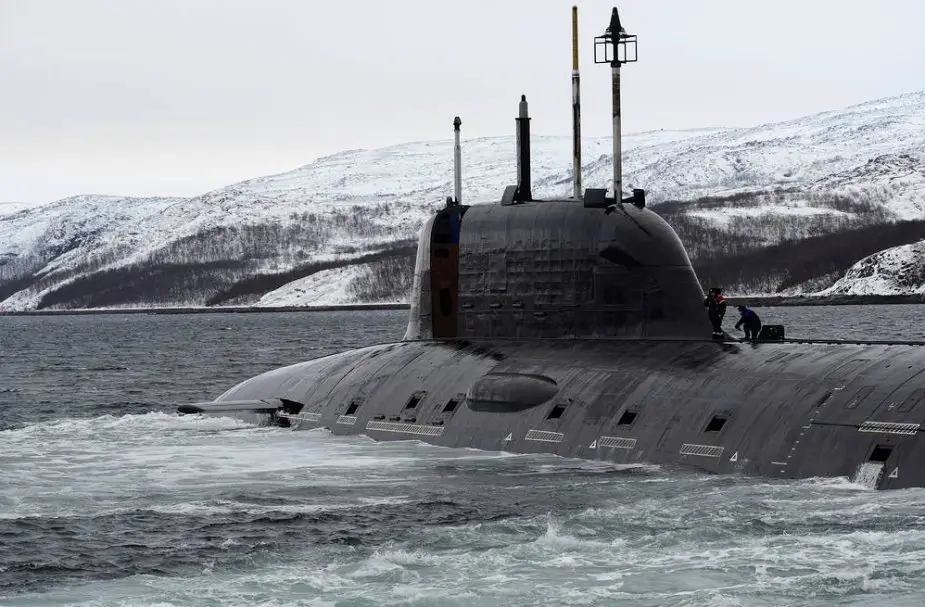Russian experts assess changes in hardware supplies after 2020
The Russian armed forces are rearmed faster than planned, Defense Minister Sergey Shoigu said. The increase of the defence budget from 1.44 to 1.50 trillion rubles helped increase the share of new and upgraded arms to 68 per cent. It means hundreds of additional weapons and hardware in the whole army. The Defense Ministry is sure to report 70 per cent in 2020. The figure was set yet in 2013.
 Yasen-class nuclear-powered submarine (Picture source: TASS)
Yasen-class nuclear-powered submarine (Picture source: TASS)
The rearmament will naturally continue in 2020, but priorities will change and new target figures announced. The Izvestia daily writes how the structure of arms deliveries will change and what will be a priority in the coming years.
The Aerospace Forces acquired most combat experience in Syria. They better understand their strong and weak points and see the development path. It is no wonder they may get most appropriations. It is confirmed by the decision of President Vladimir Putin to accelerate batch production and procurement of Su-57 fighter jets and Mi-28NM helicopters. Contracts for additional Kamov helicopters and upgraded Su-34 bombers were announced.
The experiment to create airborne units of a new type and make motorized rifles airmobile will demand to increase transport helicopter production. Procurement of S-500 air defence weapons is the most costly project for the Aerospace Forces.
More money will be necessary for batch procurement of heavy drones, specifically reconnaissance-strike ones. There are big plans to renew transport and auxiliary aviation. The Aerospace Forces will definitely enjoy priority financing.
The Ground Forces mostly lag behind in rearmament. The Strategic Missile Forces have been nearly fully rearmed and the average share of new hardware is 70% in the armed forces. The figure in the Ground Forces is 60%. The immense ground-based army of Russia makes its upgrade difficult and costly. It is impossible to quickly replace dozens of thousands of heavy hardware units. Even modern hardware, such as upgraded T-72 and BTR-80, do not fully meet current requirements.
In 2020, the current modernization has to develop into massive procurement of new and advanced arms and hardware platforms. Contracts for expensive T-14 Armata main battle tanks and new wheeled and tracked armour will demand more budget money for the Ground Forces in the coming years.
The Navy is unlikely to become a priority of new modernization programs. Russia formally keeps its oceanic ambitions, however the grandiose old plans to develop them have been forgotten. It will not have either aircraft-carrying forces or a powerful amphibious assault fleet in the foreseeable future.
The termination of the Intermediate-Range Nuclear Force (INF) Treaty will put the necessity of Kalibr-armed corvettes in doubt. They can be replaced by cheaper ground-based mobile cruise and hypersonic missiles.
The long-awaited arrival to the Navy of new frigates with modern Poliment-Redut will help create a green-water force comprising warships of several fleets. But it would be hardly able to counter the US or Chinese navies in a direct standoff.
Therefore, it is reasonable to make submarines a priority. Besides the contract for an additional two Yasen-M-class SSGN of project 885M, the order for Borey-A-class SSBN of project 955A and diesel-electric missile submarines may be expanded.
Infrastructure investments are often ignored in tank and aircraft calculations. It was necessary to satisfy the basic needs since the modernization of the armed forces began, build housing, the social infrastructure of military townships, reconstruct airstrips and modernize the bases of Strategic Missile Forces.
Now it is time to develop deployment infrastructure. The hardware becomes more expensive and needs costly maintenance, as it has to operate in extreme conditions. Its upkeep in modern hangars and envelopes prolongs the life cycle, decreases overhaul expenses and increases serviceability status.
The rearmament of missile brigades from Tockha-U to Iskander demanded to fully change the deployment infrastructure and build new hangars for the launchers. The deployment of additional ground-based intermediate missiles will trigger the same high costs. It will be necessary to engage in large-scale construction for modern weapons which Russia announced in 2018. Russia will have to borrow the experience of Syrian Humaymim where modern hangars were erected for aircraft. The Russian climate can be as harsh, as in the Middle East. Therefore, such constructions are necessary for hardware and personnel.
There are all signs that the buildup of modern infrastructure will go parallel to the supplies of the latest weapons in the coming years. The share of infrastructure expenses will grow in the total costs to rearm the troops, the Izvestia said.
© Copyright 2019 TASS. All rights reserved. This material may not be published, broadcast, rewritten or redistributed.


























